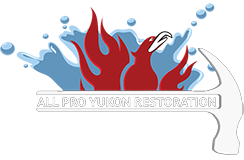Radon Removal in Whitehorse
What is Radon?
Radon is a naturally occurring radioactive gas that comes from the soil. You cannot taste or smell radon, the only way to know if radon is in your building is by testing. Health Canada has conducted studies that estimate the Yukon has radon in 20% of its buildings.
Is Radon actually dangerous?
YES! Radon is the second leading cause of lung cancer after smoking and is found in many Yukon homes. The two biggest factors involving the risk from radon are the concentration of the radon levels and the length of time you have been exposed to those concentrations.
“I have lived in my house for 40 years and I feel fine.”
Radon is not like smoking where the health effects are felt and seen long before cancer is actually present in your body. There are no other health effects during exposure to high radon levels. Cancer will suddenly appear and then the battle begins.
How does radon get into my house?
Radon is pulled through cracks in your concrete foundation or crawl space vapor barrier by a naturally occurring phenomenon called the “stack effect”. The warm air in your house travels upward, and as this air travels upwards, the air pressure in your house changes. The lowest part of your house is usually under negative pressure (air being pulled in) while the highest part of your house is usually under positive pressure (air being pushed out). It is this difference in air pressure from inside your house to outside your house that draws in radon from the ground. The biggest factor in the strength of this stack effect is the difference in temperature from inside your house to outside (ex. -20c outside while +20c inside will have a much larger stack effect compared to -10c outside and +20c inside your house). The Yukon experiences very cold temperatures and thus experiences a much stronger stack effect during the heating seasons.
How do I get my home tested?
All Pro Yukon can either provide long-term testing units or come to your house and conduct a test. Health Canada recommends a long-term test (3 to 12 months) prior to deciding whether or not to mitigate. These tests are very low cost at approximately $40 per testing unit. Short-term testing (two to seven days) or continuous monitoring testing is also offered by All Pro Yukon and is very useful in many situations such as real estate transactions and post-mitigation testing.
Who should get tested?
Unfortunately, there is very little rime or reason as to where radon is located. Neighbors on both sides of your house may require a radon mitigation system, while your house could have none at all. The truth is that there is no way of telling for sure unless a test is conducted (long-term testing yields the most accurate results).
What do I do if I have a radon issue?
Radon mitigation systems can be installed in nearly every house in the Yukon. These systems are designed and tested prior to being installed to ensure that once in place the levels of radon will be decreased to well below acceptable levels. Post-mitigation testing (after the system is installed) will confirm with both the homeowner and the contractor that the system is successful.
